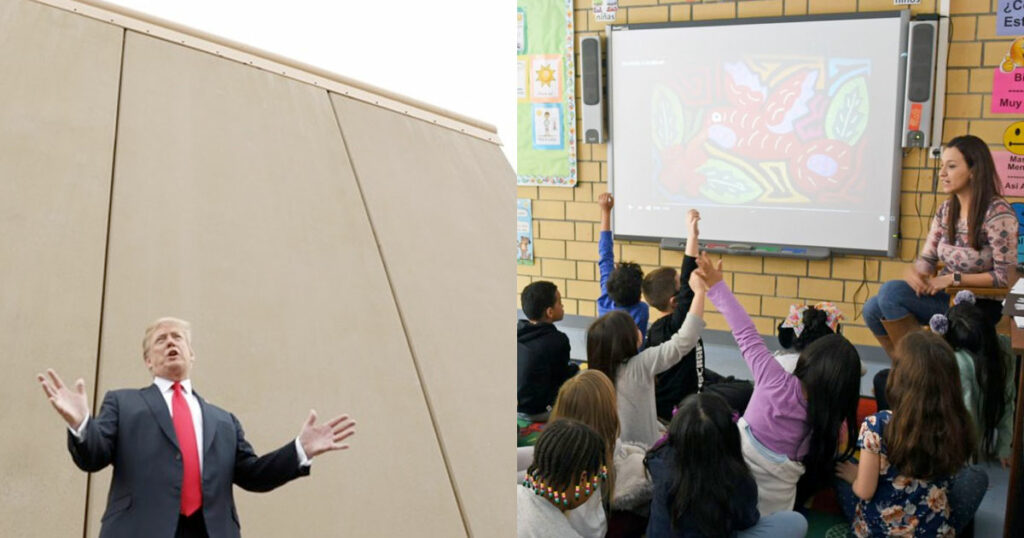Blog
Trump is Diverting Funds from One of the Best U.S. School Systems to Build His Wall

Yesterday the Pentagon announced that it would cut funding to its schools and daycare centers as part of a $3.6 billion diversion of funds toward construction of President Trump’s proposed wall on the southern border:
Schools for the children of U.S. military members from Kentucky to Germany to Japan will be affected. A daycare center at Joint Base Andrews in Maryland – the home of Air Force One – will also have its funds diverted, the Pentagon said.
This diversion, a result of President Trump using “national emergency” powers, means that the Federal government is cutting funding to a school system that educates the children of men and women serving in the military and is one of the highest-performing, most equitable school systems in the United States.
Under the auspices of the Department of Defense Education Activity (DoDEA), the Pentagon operates 163 schools in seven states, Puerto Rico, Guam, and eleven other countries. Students at DoDEA schools consistently rank among the highest-performing in the nation: 2017’s National Assessment of Educational Progress (NAEP) saw DoDEA 8th graders take top marks in Reading and tie with Massachusetts students in Mathematics.
But what makes DoDEA schools so unique is more than just test scores. As Michael Winerip wrote in the New York Times several years ago,
In the last decade, the gap in reading between black and white fourth graders at base schools has decreased to 11 points this year (233 compared with 222), down from a 16-point difference in 2003 (230 compared with 214), a 31 percent reduction.
In public schools, there has been a much smaller decrease, to a 26-point gap this year (231 compared with 205) from 30 points in 2002 (227 compared with 197), a 13 percent reduction.
The military has a far better record of integration than most institutions. Almost all of the 69 base schools are in the South. They were opened in the 1950s and ’60s because the military was racially integrated and did not want the children of black soldiers to attend racially segregated schools off base.
In public schools, there has been a much smaller decrease, to a 26-point gap this year (231 compared with 205) from 30 points in 2002 (227 compared with 197), a 13 percent reduction.
DoDEA schools have also been exempt from the decades of test mania that have saddled public schools in most states: standardized tests there are only used to assess the quality of curriculum and identify where individual students need additional help, not to rate teachers or schools. And despite recent staffing cuts earlier this year, class sizes generally remain significantly smaller than off-base public schools: staff-to-student ratios average 15:1.
Emily Richmond writes for the Hechinger Report that some out-of-school factors are addressed by the base in a way that traditional public schools can’t do on their own:
There are plenty of reasons why these schools do well. Small class size is the norm and parental involvement is compulsory. Families are also guaranteed access to housing, health care and nutritional programs, all of which influence student achievement. The 8,000 DoDEA teachers worldwide are more likely to hold advanced degrees than their public school counterparts, and more likely to have more experience since the jobs are highly coveted.
While schools can’t tackle issues like homelessness and home nutrition by themselves, policymakers can. For a comprehensive spectrum of community supports that children need, take a look at Schott’s Loving Cities Index.
The 8,000 DoDEA teachers worldwide are more likely to hold advanced degrees than their public school counterparts, and more likely to have more experience since the jobs are highly coveted.
DoDEA’s schools showcase the promise of wraparound supports, socio-economic and racial integration, and robust and equitable public funding. While all Trump’s wall can do is divide, public schools can bring entire communities together. It’s time we all stood up to support and defend them.


